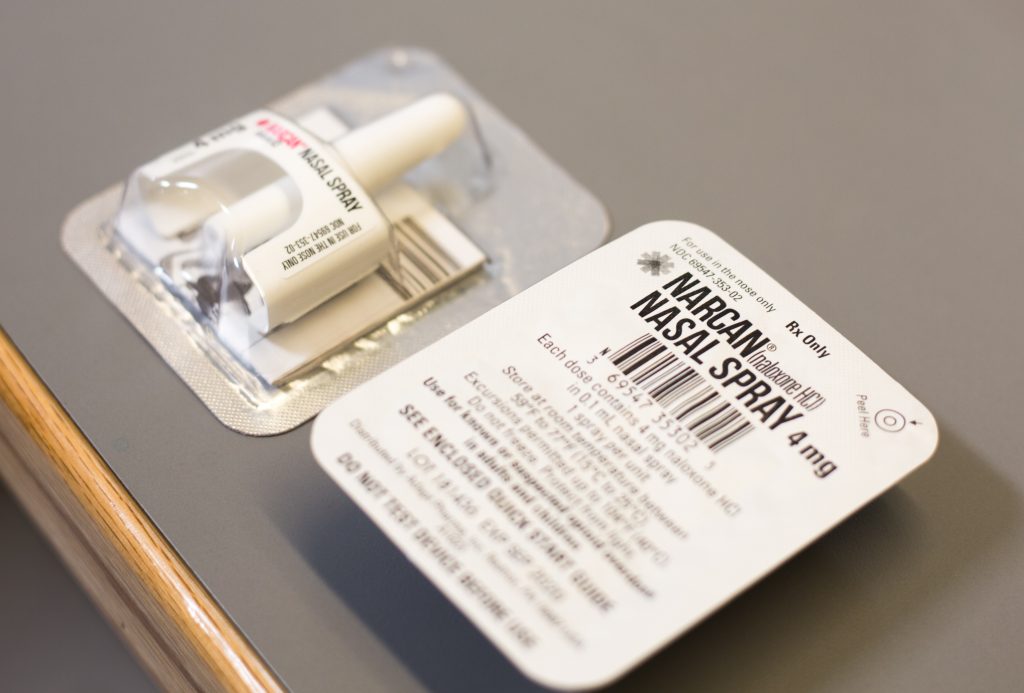
On March 27, Broome County Executive Jason Garnar declared a state of emergency in response to the high number of drug-related deaths in the month of March, with six fatalities occurring within one 10-day span.
The string of overdoses highlights the ongoing battle against opioids in Broome County, which had the highest age-adjusted rate for opioid overdoses of any county in New York state for 2018. According to William Eggleston, a clinical assistant professor at Binghamton University’s School of Pharmacy and Pharmaceutical Sciences, fentanyl is suspected to play a significant role in these deaths. Fentanyl is an extremely potent synthetic opioid, ranging from 50 to 100 times stronger than morphine, that is sometimes added to heroin and other illicit drugs to increase potency.
“The illicit drug supply that is currently being sold and used in the United States is now predominantly fentanyl and not heroin,” Eggleston said. “So, people are either getting a mixture of the two, or they’re getting straight fentanyl in place of heroin.”
Alexis Pleus, founder and executive director of Truth Pharm, an organization that aims to raise awareness about substance use disorders and treatment, said fentanyl is showing up in substances other than just heroin, which is spurring the overdoses.
“A few of the problems with that is a person who traditionally uses opioids typically has a stronger tolerance to them than someone who just occasionally uses cocaine,” Pleus said. “Since that’s different than opioids, they wouldn’t have a tolerance to that and the dosage of fentanyl would be more easily fatal to those without that tolerance.”
Eggleston said it’s important for students to recognize the dangers of illicit opioids, especially with fentanyl appearing in other types of drugs. According to Pipe Dream’s 2019 drug survey, 13 people indicated they had tried heroin before, and 45 students have tried drugs similar to opiates, including recreational use of codeine and ketamine. Larger numbers of respondents indicated that they had or would be willing to try cocaine, one of the drugs that is currently at risk for being cut with fentanyl.
In an emergency, naloxone HCl, also known by its brand name, Narcan, can be used to reverse the effects of a possible opioid overdose. But Pleus said that unlike people who use opioids, those who use other substances often do not expect an overdose and do not have a naloxone kit on hand.
“We do Narcan training in the community at places like bus stations, the library and in our office,” Pleus said. “Reasons people like to do the training with us is that we’re really careful with explaining the process. We’re not judgmental — we don’t use stigmatizing language.”
Students can access a variety of resources to ensure they have naloxone on hand. Narcan nasal spray is available at Decker Student Health Services Center, at local pharmacies and online. Truth Pharm and Broome Opioid Awareness Council (BOAC) offer training on using naloxone kits, and Southern Tier AIDS Program and Broome County Prevention Point offer free and anonymous services to help drug users, including sterile syringes. Officers working with Binghamton’s New York State University Police Department (UPD) also carry naloxone HCI.
In her time working with Truth Pharm, Pleus said she has learned that some students believe if they don’t do drugs personally and their friends aren’t doing drugs, then it’s not an issue on campus. She said this idea can be harmful, because it can stop people from getting help or reaching out for resources that can prevent overdoses.
“Some students feel like they can’t even talk about it because it’s stigmatizing to assume that Binghamton University students are better than that or aren’t dealing with this issue,” Pleus said. “There’s a long way to go to make this conversation something easier to talk about, so we can help reduce harm.”


